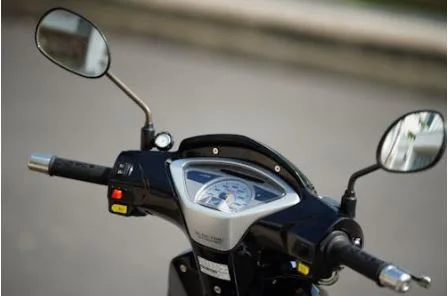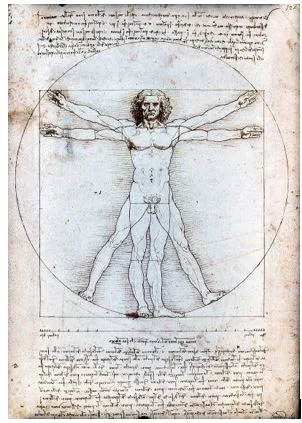The Buzzing World of Tattoo Machines: Your Guide to Not Looking Like a Complete Newbie
So, you’ve decided to join the ranks of tattoo artists, huh? Maybe you watched one too many episodes of “Ink Master” and thought, “Hey, how hard could it be?” Well, buckle up, buttercup, because choosing your first tattoo machine is like picking your first car – except this one will be permanently marking people’s skin instead of just getting you to the grocery store.
Welcome to the wonderfully chaotic world of tattoo machines, where the difference between a masterpiece and a disaster often comes down to having the right tool in your hand. Whether you’re a complete beginner who can barely draw a stick figure or someone who’s been practicing on oranges for months (please tell me you’ve graduated from fruit by now), this guide will help you navigate the maze of coils, rotaries, and those fancy pen-style machines that make everyone feel like they’re writing with the world’s most expensive marker.
The Great Machine Divide: Coil vs. Rotary vs. “Wait, There Are More Types?”
The Old-School Coil Machines: Like Driving a Classic Car (But Louder)
Ah, coil machines – the granddaddies of the tattoo world. These bad boys have been around since your great-grandfather was getting anchors tattooed on his forearms. They work on electromagnetic principles that would make Tesla proud, using coils to create a magnetic field that moves the needle up and down faster than a caffeinated woodpecker.
The beauty of coil machines lies in their raw power and precision. They’re like the muscle cars of the tattoo world – loud, proud, and capable of laying down some seriously solid lines. When you fire up a coil machine, everyone in a three-block radius knows you mean business. The distinctive buzzing sound isn’t just noise; it’s the battle cry of traditional tattooing. These machines excel at bold outlines and can push through tough skin like a hot knife through butter. However, they do require a bit more finesse to master, and your hand might feel like you’ve been jackhammering concrete after a long session.
Rotary Machines: The Smooth Operators
Enter the rotary machines – the sophisticated cousins who went to college and learned about things like “ergonomics” and “user comfort.” These machines use a rotating motor to drive the needle, creating a much smoother, quieter operation. It’s like the difference between riding a Harley and gliding along in a Tesla – both will get you where you’re going, but one does it with a lot less drama.
Rotary machines have become increasingly popular, especially among newer artists, because they’re generally easier to learn on and more forgiving. They’re excellent for shading work and can handle both lining and coloring with the grace of a ballet dancer. The reduced vibration means less hand fatigue, which is great news if you’re planning to tattoo for more than twenty minutes without your hand cramping up like you’ve been gripping a stress ball all day. Plus, they’re typically lighter weight, making them perfect for those marathon tattoo sessions where you need to maintain steady hands for hours.
Pen Machines: The New Kids on the Block (Who Actually Know What They’re Doing)
Now we come to the pen machines – the sleek, modern marvels that look like someone took a regular pen and fed it nothing but protein shakes and ambition. These are technically a subset of rotary machines, but they deserve their own spotlight because they’ve revolutionized the game faster than you can say “cartridge needle.”
Pen machines are the Swiss Army knives of the tattoo world. They’re lightweight, incredibly versatile, and so user-friendly that even your technologically challenged uncle could probably figure them out (though please don’t let him near anyone’s skin). The ergonomic design means you can hold them like you would a regular pen or pencil, which is revolutionary for anyone who’s ever tried to maneuver a traditional machine around tight curves and delicate areas. It’s like the difference between performing surgery with a chainsaw versus a scalpel.
What makes pen machines particularly appealing to newcomers is their compatibility with cartridge needles. Gone are the days of building needle configurations like you’re assembling IKEA furniture without instructions. With cartridge systems, you simply click in your needle, adjust your settings, and you’re ready to create art. It’s so simple that it almost feels like cheating – but the good kind of cheating, like using a calculator during a math test when the teacher isn’t looking.
What to Look for When You’re Looking (And Trying Not to Look Clueless)
Budget Considerations: Because Ramen Noodles Get Old Fast
Let’s talk money, honey. Unless you’ve got a trust fund or recently won the lottery, you’re probably looking at this whole tattoo machine thing through the lens of “How much is this going to cost me, and will I still be able to afford food this month?” The good news is that you don’t need to sell a kidney to get started in the tattoo world, though the temptation might be real when you see some of those high-end machines with price tags that could fund a small country.
For beginners, the sweet spot usually falls somewhere between “suspiciously cheap” and “mortgage payment.” You want something that won’t fall apart after a week but won’t require you to eat nothing but instant noodles for the next six months. Many reputable brands offer affordable tattoo pens that provide excellent quality without breaking the bank. These entry-level options often come with everything you need to get started, including various needle cartridges, power supplies, and sometimes even practice skins (because nobody wants their first tattoo attempt to be on a real human being).
The key is finding that perfect balance between quality and affordability. You don’t want to go so cheap that your machine sounds like a dying blender, but you also don’t need to start with a machine that costs more than your car. Remember, even the most expensive machine in the world won’t make you a great artist overnight – that comes with practice, patience, and probably a few tears along the way.
Brand Reputation: Separating the Wheat from the Chaff (And the Scams from the Gems)
In the tattoo machine world, brand reputation matters more than your high school popularity status ever did. Some brands have been around longer than your grandmother’s secret cookie recipe and have earned their stripes through decades of reliable performance. Others are newer to the scene but have quickly made names for themselves by focusing on innovation and user experience.
When researching brands, look for companies that have strong communities of artists using their products. Check out forums, social media groups, and YouTube reviews from actual tattoo artists – not just sponsored content that sounds like it was written by a marketing robot. Brands like Neebol have gained recognition for providing quality equipment that doesn’t require you to take out a second mortgage. They understand that not everyone starting out has unlimited funds, but everyone deserves access to reliable, well-made equipment.
Pay attention to warranty policies, customer service responsiveness, and the availability of replacement parts. There’s nothing worse than having your machine break down in the middle of a session and discovering that getting parts is harder than finding a unicorn. Good brands stand behind their products and make it easy to get help when you need it.
Technical Specs That Actually Matter (And Some That Don’t, But Sound Impressive)
Power and Performance: It’s Not the Size, It’s How You Use It
When diving into the technical specifications of tattoo machines, it’s easy to get overwhelmed by numbers, voltages, and acronyms that sound like they belong in a NASA manual. But fear not – most of this technical jargon is less important than knowing how to make a decent cup of coffee (which, let’s be honest, is crucial for any tattoo artist’s survival).
The most important specs to understand are voltage range, needle depth adjustment, and stroke length. Voltage typically ranges from about 4 to 12 volts, and different techniques require different power levels. Lining usually needs higher voltage for crisp, clean lines, while shading requires lower voltage for smooth gradients. Think of it like cooking – you wouldn’t use the same heat setting to sear a steak as you would to melt chocolate. Most modern machines come with easy-to-use voltage controls, so you won’t need an engineering degree to figure them out.
Needle depth adjustment is another crucial feature that separates the good machines from the “why did I buy this piece of junk” machines. You need to be able to control how deep the needle penetrates the skin with precision. Too shallow and your ink won’t stick; too deep and you’ll be creating abstract art on someone’s dermis (and probably getting sued). Look for machines with clear, easy-to-read depth indicators and smooth adjustment mechanisms.
Weight and Ergonomics: Because Your Hand Isn’t Made of Steel
Here’s something they don’t tell you in those glamorous tattoo TV shows – your hand is going to get tired. Really tired. Like “I can’t feel my fingers and my wrist feels like it’s been run over by a truck” tired. This is why the weight and ergonomics of your machine matter more than you might think.
A machine that’s too heavy will have you feeling like you’re trying to tattoo with a brick attached to your hand. Too light, and you might not have enough control for precise work. The sweet spot is usually somewhere between 150-250 grams, depending on your hand size and strength. Remember, you might be holding this thing for several hours at a time, so comfort is key.
The grip is equally important. Look for machines with comfortable, non-slip grips that won’t have you readjusting your hold every five minutes. Some machines come with interchangeable grips in different sizes, which is great if you have particularly large or small hands. The shape should feel natural in your hand – if it feels awkward in the store, it’s going to feel even worse after three hours of tattooing.
The Art of Not Screwing Up Your Investment (Maintenance and Care)
Daily Maintenance: Treat Your Machine Like Your Best Friend (Because It Kind of Is)
Your tattoo machine is going to be your constant companion, your partner in crime, your ticket to artistic expression – so treat it with the respect it deserves. Daily maintenance isn’t just about keeping your machine running; it’s about ensuring consistent performance and extending its lifespan beyond that of a mayfly.
After each session, disassemble your machine according to the manufacturer’s instructions. Clean all components thoroughly with appropriate cleaning solutions – and no, your leftover beer doesn’t count as a cleaning solution, no matter how desperate you are. Pay special attention to the needle bar and tube, as these are where ink and debris love to hide like teenagers avoiding chores. Use ultrasonic cleaners if you have access to them, or good old-fashioned elbow grease if you don’t.
Lubrication is crucial for rotary machines, but don’t go crazy with it. A little goes a long way, and too much oil can attract dirt and debris faster than a magnet attracts metal shavings. Follow the manufacturer’s recommendations for lubrication frequency and type. Some machines need daily lubrication, others can go longer between treatments. When in doubt, check your manual – yes, that booklet you immediately threw in a drawer when you got your machine.
Long-term Care: Planning for the Marathon, Not the Sprint
Think of long-term maintenance like going to the dentist – nobody really wants to do it, but ignoring it will lead to much bigger problems down the road. Regular deep cleaning, part replacement, and professional servicing will keep your machine running smoothly for years to come.
Keep spare parts on hand, especially the ones that wear out frequently like springs, screws, and O-rings. It’s like keeping spare batteries for your TV remote – you don’t think about it until you need it, and then you’re really glad you planned ahead. Most manufacturers sell maintenance kits that include all the commonly replaced parts, which is much more convenient than trying to hunt down individual components when something breaks.
Consider having your machine professionally serviced annually, especially if you’re using it regularly. A good technician can spot potential problems before they become major issues and can perform adjustments that will improve your machine’s performance. It’s an investment in your tools and, by extension, your art.
Common Rookie Mistakes (And How to Avoid Looking Like You Learned Tattooing from YouTube)
The “More Expensive Must Be Better” Trap
One of the biggest mistakes new tattoo artists make is assuming that the most expensive machine will automatically make them better artists. This is like thinking that buying a Ferrari will make you a Formula 1 driver – sure, it’s a nice car, but if you don’t know how to drive, you’re just going to crash in style.
Expensive machines often come with features that beginners simply don’t need yet. It’s like buying a professional-grade camera when you’re still figuring out how to take photos that aren’t blurry. Start with a quality mid-range machine that has good reviews and a solid reputation. Learn the fundamentals, develop your technique, and then upgrade when you actually understand what features you need and why you need them.
Remember, some of the most legendary tattoo artists started with basic equipment and created masterpieces through skill, not expensive gear. Your machine is just a tool – the real magic happens in your hands, your eyes, and your artistic vision. Don’t let gear acquisition syndrome distract you from the real work of becoming a better artist.
The “I’ll Figure It Out as I Go” Approach
Another common mistake is jumping in without proper education and training. Tattooing isn’t like learning to ride a bike – you can’t just hop on and hope for the best. The consequences of mistakes are permanent and literally skin-deep.
Invest in proper training before you invest in equipment. Take classes, find a mentor, practice on synthetic skin until you’re blue in the face. Understand hygiene protocols, learn about different skin types, and study color theory. Your machine is only as good as the knowledge behind it, and no amount of expensive equipment can compensate for lack of proper training.
Also, don’t underestimate the importance of understanding your local regulations and licensing requirements. The tattoo industry is heavily regulated for good reasons, and operating without proper licenses and certifications isn’t just illegal – it’s dangerous for both you and your clients.
The “One Machine Does Everything” Myth
Many beginners think they need to find the one perfect machine that can do everything from fine line work to heavy shading. While modern machines are incredibly versatile, most professional artists have multiple machines for different purposes, just like a chef has different knives for different tasks.
Start with one good, versatile machine that can handle the basics, but don’t expect it to be perfect for every situation. As you develop your style and preferences, you’ll naturally gravitate toward certain types of work, and that’s when you can start building a collection of specialized tools. It’s better to master one machine thoroughly than to have five machines you barely understand.
The Bottom Line: Your Journey Starts with the Right Tool
Making the Decision That’s Right for You
Choosing your first tattoo machine is a personal decision that depends on your budget, your artistic goals, your physical comfort, and your learning style. There’s no universally “best” machine, just like there’s no universally best flavor of ice cream (though anyone who says vanilla is clearly wrong).
Take your time with this decision. Read reviews, watch videos, talk to other artists, and if possible, try before you buy. Many tattoo supply shops have demo days or will let you handle different machines to get a feel for them. Your machine is going to be an extension of your hand, so it needs to feel right.
Don’t be swayed by flashy marketing or peer pressure. The best machine for your friend might be terrible for you, and that’s okay. Trust your instincts, do your research, and choose something that fits your needs and budget. Remember, you can always upgrade later as your skills and preferences evolve.
Final Words of Wisdom (Or at Least Friendly Advice)
The tattoo industry is constantly evolving, with new technologies and techniques emerging regularly. What’s cutting-edge today might be old news tomorrow, so don’t get too caught up in having the latest and greatest equipment. Focus on mastering the fundamentals with reliable, well-made tools.
Build relationships with other artists, suppliers, and mentors. The tattoo community can be incredibly supportive and generous with knowledge and advice. Don’t be afraid to ask questions – everyone was a beginner once, and most people are happy to help someone who’s genuinely interested in learning and improving.
Most importantly, remember that becoming a skilled tattoo artist is a journey, not a destination. Your first machine is just the beginning of that journey. Choose wisely, practice diligently, and always prioritize safety and professionalism. The skin you’re working on belongs to someone who trusts you with their body and their vision – that’s a responsibility that goes far beyond just having the right equipment.
Whether you end up with a traditional coil machine, a smooth rotary, or one of those sleek pen-style machines, the most important thing is that you use it to create art that makes both you and your clients proud. Now stop reading articles and go practice – those oranges aren’t going to tattoo themselves!






